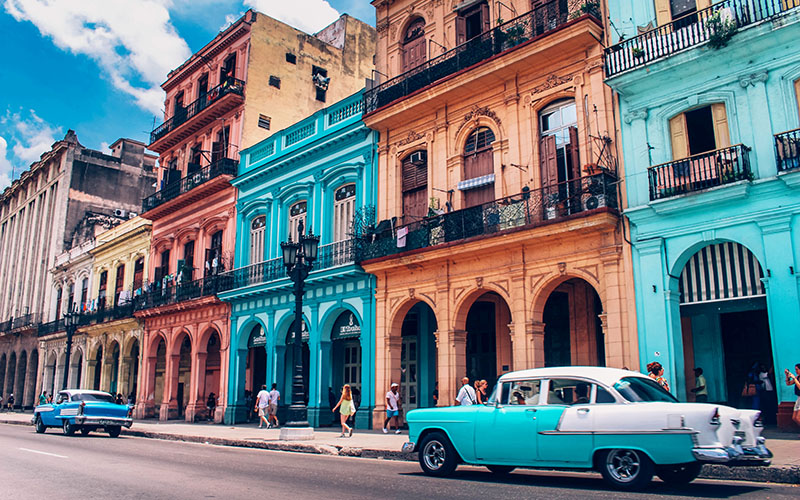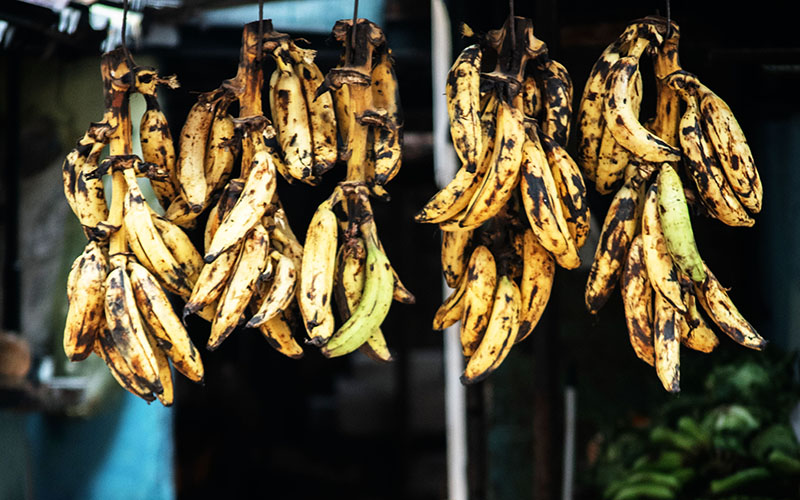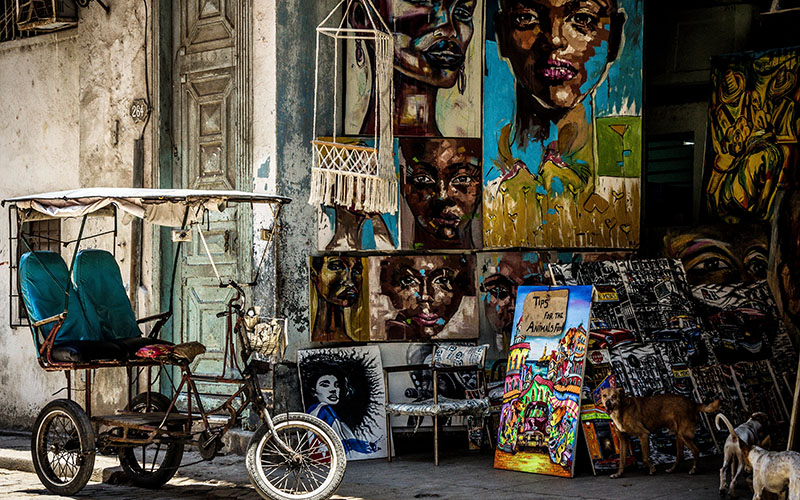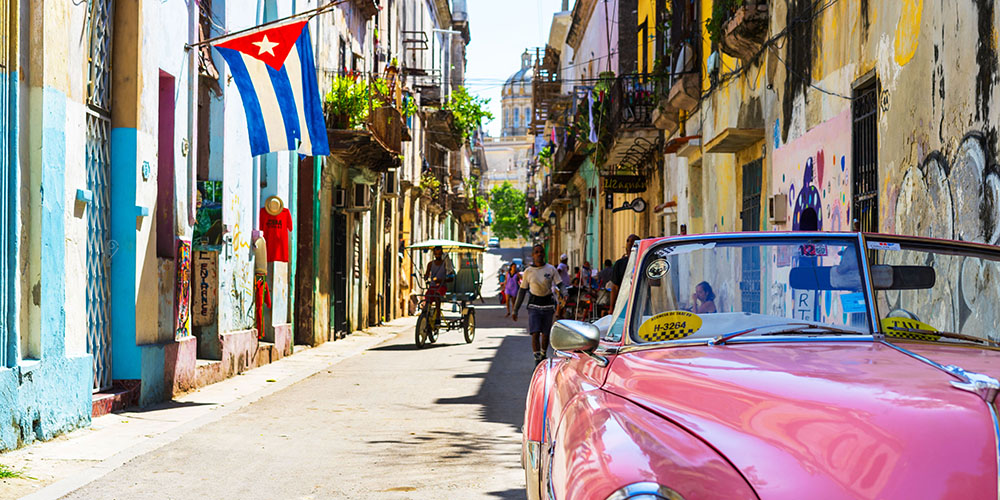Cuba, people are only too keen to tell me, has broken her own records recently with visitors. While most probably think of Havana as a destination, outside of the capitol, spots like Trinidad, Matanzas, Villa Clara, Jardines del Rey, and Holguin have seen a surge of travelers. People flock to the island typically for the sun and sand, the cigars, salsa dancing, and old colorful cars. There is, however, a rich history to the city, one that is written in the cities’ infrastructures, landscapes, and people.
Cuba isn’t known for its efficiency, the lack of which can only partly be excused by the Caribbean sun and any attempts at manual work in the midday heat. In fact, the entire sense of time has been frozen since 1959 when the revolution took hold of the island and future president, Fidel Castro, became Prime Minister. While modern in some respects, Cuba is in one massive time-lapse. A museum to Communism.

Havana is almost cinematic. Certainly scenic. Beautiful old cars, acting as taxis, from the 1950s hoot and crank around the city, customized and often with the doors and side-mirrors held together practically with sellotape. The city has a strong resemblance to Naples with her laundry lines and systematic bustle and deprivation. All steamy. All frenzy. Very Tennessee Williams. Better at night and sundown for me even than by daylight. For it’s then that semi-clad figures emerge from the balconies (that drip with rusty electricity wiring) to express themselves, brandishing food, cigars, and drink. The fading, peeling Art Nouveau buildings, with their intricate ironwork match the roads for their state of disrepair. They are still potholed and this means, as the taxi driver jokes “You sometimes get a massage for free in this car!”
As I make my way along Calle Obispo I’m startled by the subtle changes. I pop in on the famous Bodegita del Medio, where Hemingway enjoyed his Mojitos. Many authors and musicians have passed through these doors including the great Gabriel Garcia Marquez.
At Cristobel Cathedral old ladies still wear white turbans and long lace dresses as they sell knitted dolls. I stop off in Nao, one of the new breed of self-owned paladares. These are restaurants set in local homes. Although there are only six tables set, it is cozy and the menu offers a wide range of delicacies including the likes of octopus and rabbit.

But nowhere is more characterful than the Hotel Nacional de Cuba. This imposing 1930s structure is truly redolent of Cuba’s glamorous past. Its own museum has a wall of fame boasting Frank Sinatra, Walt Disney, and the Duke and Duchess of Windsor. The stylish music hall and cigar-reeking casino are highly nostalgic. Most memorable are the specific room numbers of the historic guest list. All on the same floor are 218 for Nat King Cole, 214 for Sinatra, 228 for Fred Astaire and 235 for Errol Flynn. The prize restaurant is the “Comedor de Aguiar” with penguin-ed waiters and beautiful chandeliers.
Here it was, in a salon of a waiting room, that I picked up a dictionary of Cuban Spanish only to rejoice in its slang. “Gordo como una buoya” means fat as a buoy while “orracho como una uva” is drunk as a grape while “flaco como un güin” means as thin as a sugarcane flower. Similarly graphic and pertinent in their descriptions are “ponchar” to fail an exam (literally, to get a flat tire) and “paton” duck feet (said of someone who can’t dance).
I leave Havana the next morning with the invitation to get a feel of the countryside. I pass small makeshift houses with a slap of paint here and there and goats and hens roaming the gardens. The fields vary in size and undulate in most cases as the tractors are saved for the larger centrally owned farms. It’s common to find tall palm trees standing in the middle of a field.
It is a four-hour bus ride to Cayo Coco amongst the archipelago of wetlands that make up the Jardins Del Rey. These mangroves are joined to the mainland by a lengthy causeway. There’s a divinely white sandy beach running along the back of my hotel. Every little comfort is included in the hotel package as Pedro and his donkey patrol the beach handing out beers and soft drinks to the hard-pressed sunbathers.

It would be only too easy to have spent a week here but I want to see more of the island. I journey through the spine of Cuba. I head to Santiago de Cuba. En route, I pass through the city of Camaguey. It’s a clean and beautifully preserved city. Different from Havana. More bicycles than old Cadillacs. The winding labyrinth of streets, hide a cornucopia of talented artists exhibiting their work and an abundance of clay pots for which the city is famous. That night I stay at Santa Lucia where the waters are bath temperature and shallow. I check in at the lively Brisas resort and embrace the beach once more. My next stop is Holguin where the local beers Cristal and Bucanero are brewed. The landscape changes the further south I travel and bumps rise out of the landscape.
The final part of my journey towards shows up a contrasting mountainous landscape. Finally, I reach Santiago. This, Cuba’s “second city,” just celebrated its 500th year since the Spanish claimed it. It’s a beautiful city that stands alone and is the original site where Castro declared the socialist state on January 1st, 1959. Traveling through this long island, I’m struck by the tension between the beautiful landscapes and the politics that have defined this island — it’s chaos and the charm. Fidel Castro’s autobiography was the only book stocked in my hotel’s bookshop and the vintage cars lining the streets — the constant reminders of the island’s legacy. •




